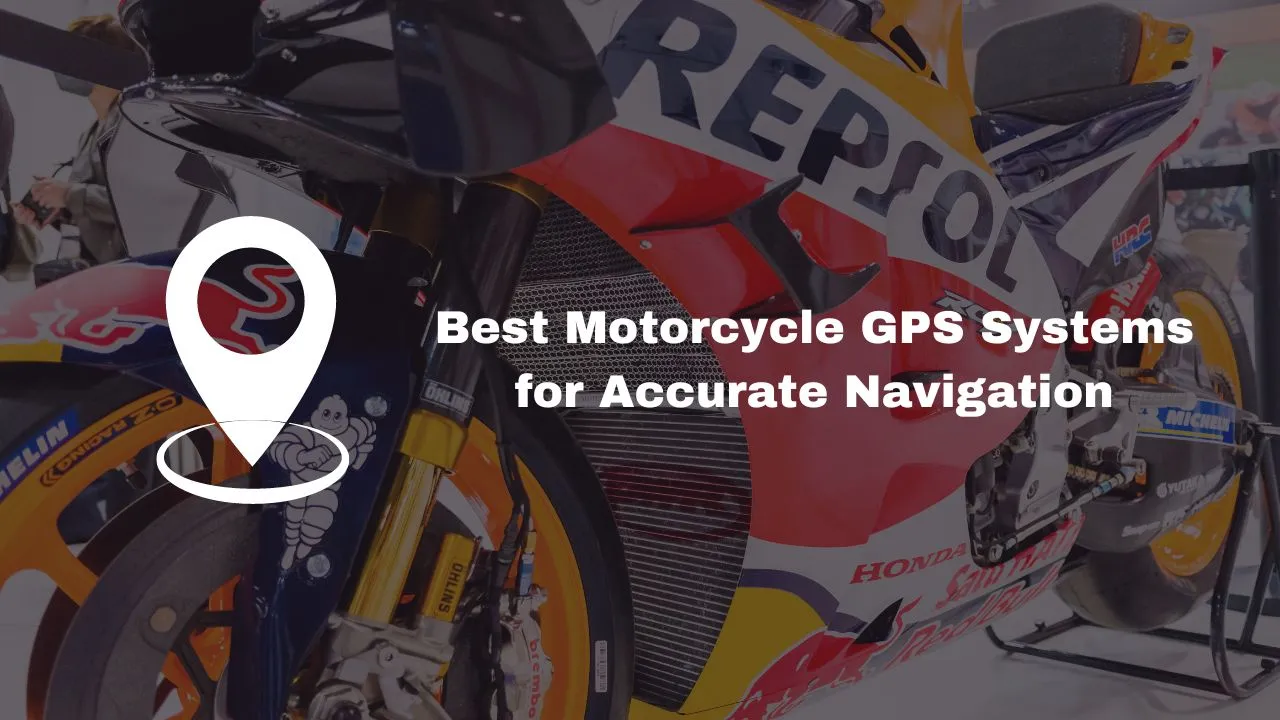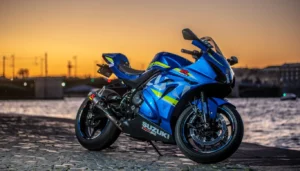In today’s fast-paced world, having a reliable GPS system can make all the difference in ensuring you never get lost on your rides. Whether you’re a seasoned rider or just starting, the peace of mind that comes with accurate, real-time navigation is invaluable. After all, nothing ruins a perfect day out like taking a wrong turn and losing precious time.
Imagine having a trusty guide by your side or, in this case, on your handlebars, helping you navigate through unfamiliar terrains with ease. It’s not just about reaching your destination but enjoying the journey without any worry. That’s where selecting the right GPS system comes into play.
“A good GPS system is more than just a navigational tool; it’s your riding companion.” – Experienced Rider
In this article, we will help you pick a reliable GPS system tailored to your needs. From essential features to consider, to the top brands in the market, you’ll find everything you need to make an informed decision. So, gear up and get ready to enjoy a smooth, worry-free ride!
Why Accurate Navigation Matters for Motorcycle Riders
Having a dependable GPS system on your motorcycle can truly transform your rides. It does more than just keep you on the right path; it enhances your overall experience, letting you relish the excitement of the journey while prioritizing your safety and convenience.
Core Navigation and Mapping Capabilities
At the heart of every high-quality motorcycle GPS device is its superior navigation and mapping features. These systems are designed with precision in mind, offering detailed street maps for urban adventures and topographical maps for off-road explorations. This versatility allows you to choose your path with confidence, regardless of where it leads.
Custom Route Planning
One of the standout features of modern motorcycle GPS systems is the ability to plan customized routes. This means you can identify and follow scenic routes tailored to your preferences, whether you’re seeking the fastest way to your destination or the most picturesque. This personalized touch adds a new dimension to every ride, transforming routine trips into memorable journeys.
Offline Maps for Uninterrupted Navigation
Riding through remote areas or across borders often means encountering areas with spotty or nonexistent cell service. This is where offline maps become invaluable. With offline capabilities, your GPS ensures that you won’t lose your way even when there’s no signal, providing peace of mind and continuous guidance during your adventures.
Rugged Designs and High-Visibility Screens
Motorcycle GPS devices are built to withstand the unique challenges of riding. They feature rugged designs that resist weather elements, dust, and vibrations, ensuring durability. Additionally, high-visibility screens are designed to be readable in all lighting conditions, allowing for quick and easy reference without taking your eyes off the road for too long.
Theft Prevention Features
Many advanced GPS systems offer theft prevention capabilities, such as remote engine shutdown. This feature allows you to disable your motorcycle’s engine remotely, acting as a strong deterrent to thieves. It’s an added layer of security that gives you more control and peace of mind about your motorcycle’s safety.
Bluetooth Connectivity
Bluetooth connectivity in a GPS system enhances the riding experience by enabling hands-free operation. You can receive turn-by-turn directions directly into your helmet, listen to your favorite tunes, or communicate with fellow riders. This integration makes navigation seamless and keeps you connected without compromising safety.
Also Read: Which States Require You to Have Motorcycle Insurance? A Comprehensive Guide
Top Features to Look for in a Motorcycle GPS
Finding the right GPS system for your motorcycle is pivotal for a seamless and enjoyable riding experience. Modern motorcycle GPS units come loaded with features designed to enhance safety, navigation, and overall convenience. Knowing what to look for can help you make an informed decision. Let’s delve into the essential attributes that make a motorcycle GPS worth considering.
Durability and Weather Resistance
Motorcycle rides are subject to various weather conditions and rugged terrains. Hence, it’s crucial to select a GPS that is built to withstand these elements. Look for units with IPX7 or higher ratings for water and dust resistance. Durable casings also protect against shocks and vibrations, ensuring your GPS remains functional through long rides and tough conditions.
Voice Navigation
Keeping your eyes on the road is vital for safety. Voice navigation features provide turn-by-turn directions audibly, which allows riders to stay focused on their path rather than glancing down at the screen. This hands-free convenience adds an extra layer of safety and ease to your journey.
Real-time Traffic Updates
Getting stuck in traffic can be frustrating and time-consuming. Some advanced motorcycle GPS systems offer real-time traffic updates to help you avoid congested areas. This feature provides alternate routes and estimated times of arrival, ensuring that you reach your destination as efficiently as possible.
Automated Ride Logging
For those who love to document their rides, automated ride logging is a fantastic feature. This function records the details of your journey, including routes taken, distances covered, and stops made. It’s an excellent way to reminisce about past rides or share your travels with friends and fellow enthusiasts.
Integration with Mobile Apps
Modern GPS systems often come with companion mobile apps that offer additional functionalities. These apps can sync your routes, provide weather forecasts, and even share your location with loved ones in real-time. This integration makes it easier to plan trips, stay informed, and ensure your loved ones know where you are.
Battery Life and Power Options
A dependable power source is critical for long rides. Look for GPS units with extended battery life or the option to connect to your motorcycle’s power system. Some models also offer portable battery packs, ensuring that you won’t be left without navigation in crucial moments.
Comparing the Best Motorcycle GPS Systems of 2024
The year 2024 has seen some remarkable advancements in motorcycle GPS systems. From improved durability to enhanced connectivity, the latest devices are designed to meet the diverse needs of riders. This section provides an in-depth comparison of the top motorcycle GPS systems available this year, helping you choose the best fit for your adventures.
Garmin Zūmo XT
Garmin Zūmo XT is a top choice for riders who need a robust and reliable GPS. This device features a 5.5-inch high-resolution glove-friendly touchscreen that remains visible even in bright sunlight. It excels in durability, being IPX7 rated for water resistance. With its preloaded on-road and off-road maps, along with topographical maps, it ensures you never miss a trail.
Key Features:
- High-visibility, glove-friendly touchscreen
- Durable and waterproof (IPX7 rating)
- Preloaded street and topographical maps
- Live traffic and weather updates via the Garmin Drive app
TomTom Rider 550
TomTom Rider 550 is renowned for its advanced route planning capabilities. This GPS system allows you to discover and plan exciting routes with its built-in ‘Winding Roads’ and ‘Hilly Roads’ options, adding thrill to your riding experience. It also offers Wi-Fi connectivity for easy updates and synchronization with your smartphone.
Key Features:
- ‘Winding Roads’ and ‘Hilly Roads’ route options
- Wi-Fi connectivity for updates
- Smartphone notifications and hands-free calling
- Water-resistant with IPX7 rating
BMW Motorrad Navigator VI
BMW Motorrad Navigator VI aligns perfectly with BMW motorcycle enthusiasts. This GPS system integrates seamlessly with BMW’s handlebar controls, offering an intuitive navigation experience. It features a large 5-inch display with reduced sunlight reflection and provides access to real-time traffic and weather updates.
Key Features:
- Integration with BMW motorcycles
- 5-inch sunlight-readable display
- Real-time traffic and weather updates
- Preloaded with detailed road maps
Trail Tech Voyager Pro
Trail Tech Voyager Pro is perfect for off-road enthusiasts. It comes equipped with an impressive range of features designed specifically for adventurous rides, including Buddy Tracking and essential off-road maps. The device’s rugged build ensures durability in the most challenging conditions.
Key Features:
- Buddy Tracking for off-road group rides
- Preloaded with off-road maps
- Durable and weather-resistant design
- 4-inch glove-friendly touchscreen
Also Read: Comparing Off-Road Performance: Dirt Bikes vs. Motorcycles
Durability and Weather Resistance: A Must for Motorcycle GPS
When selecting a GPS system for your motorcycle, durability and weather resistance should be at the top of your list. These devices are exposed to a range of harsh elements, from intense UV rays to pouring rain and even mud splashes. To ensure continuous and reliable performance, it’s essential to choose a GPS that can withstand all these conditions without faltering. Let’s break down what you should look for when it comes to durability and weather resistance in motorcycle GPS systems.
High IP Ratings for Maximum Protection
One of the key indicators of a GPS’s durability and weather resistance is its Ingress Protection (IP) rating. The IP rating is a standardized measure that determines how well the device is protected against dust and water. For motorcycle GPS systems, an IP67 rating or higher is recommended. This rating ensures that the device is completely dust-tight and can survive immersion in water to a depth of one meter for up to 30 minutes.
Shock and Vibration Resistance
Motorcycles often travel on uneven terrain and at high speeds, making them susceptible to significant vibrations and occasional shocks. A robust motorcycle GPS should be designed to handle these physical stresses. Look for devices that have been specifically tested for vibration resistance and can continue to function accurately even on the roughest rides.
UV Protection
Extended exposure to sunlight can cause irreversible damage to electronic devices, including GPS systems. Sunlight can lead to fading screens, damaged casings, and degraded internal components. Choose a GPS that includes UV protection features, such as UV-resistant coatings or materials, to ensure that your device remains reliable and legible under direct sunlight.
Operating Temperature Range
Motorcyclists often face varying temperatures, from the freezing cold mornings to scorching afternoons. It’s crucial that your GPS can operate seamlessly across these temperature extremes. Check the manufacturer’s specifications for the operating temperature range of the device to ensure it suits the conditions you plan to ride in.
Waterproof and Weatherproof Casings
Lastly, the physical casing of the GPS should provide comprehensive protection against the elements. Waterproof casings are essential for preventing water damage, while weatherproof designs protect against other environmental factors like dust, mud, and wind. Consider devices with sealed buttons, ports, and rubberized exteriors for added durability.
Battery Life and Power Options for Long Rides
When planning for long rides, your motorcycle GPS system’s battery life and power options are crucial factors to consider. A reliable GPS should not only help you navigate effectively but also last through your entire journey without constant recharges. Here’s what you should look for:
Assessing Battery Life
The duration a GPS device can last on a single charge is vital, especially for extended trips. Most top-end motorcycle GPS systems offer between 5 to 12 hours of battery life. Assess your typical ride duration and consider a GPS that meets or exceeds these demands.
Power Resource Options
Power options can vary significantly. Some GPS systems allow direct wiring to your motorcycle’s battery, ensuring continuous power. Others make use of replaceable or rechargeable batteries, which can be handy for swapping out on the go. The best choice depends on how you plan to use the GPS and your willingness to carry spare batteries.
Charging Flexibility
Opt for GPS units that offer versatile charging options. USB-based charging systems are convenient as they allow charging from various sources such as power banks and solar chargers. In-ride charging through your bike’s electrical system is another excellent feature to keep the device powered at all times.
Battery Saving Modes
Some advanced GPS units come equipped with battery-saving modes that adjust screen brightness and limit certain functionalities. These settings can extend battery life by a few vital hours, proving useful when you’re miles away from a power source.
Consideration of Battery Longevity
Not all batteries are created equal. Look for GPS systems with long battery longevity, meaning they can endure many charge cycles before performance degrades. This consideration ensures your device remains reliable over the long term.
In summary, your chosen motorcycle GPS should align with your ride duration and offer multiple power options to ensure you remain on track throughout your journey.
Mounting Options: Keeping Your GPS Secure
Mounting your GPS securely is crucial. A stable and secure mount not only keeps your device in place but also ensures that you can easily view and interact with the screen while riding. Here’s how to make sure your GPS stays put on your motorcycle, no matter where the road takes you.
Choosing the Right Mounting Location
First, pick the ideal spot for mounting. The handlebars are typically the best location because they offer easy visibility and access. However, make sure the GPS doesn’t obstruct any essential controls or your view of the road.
Types of Mounting Brackets
There are various mounting brackets available, each designed to fit different parts of your motorcycle. Handlebar mounts, fork stem mounts, and clutch/brake mounts are popular options. Select one that best fits your bike’s design and your personal preference.
Installation Process
Mounting your GPS doesn’t have to be complicated. Begin by securely attaching the bracket to your chosen location. Ensure all screws and bolts are tightly fastened to avoid any loosening while riding. Some mounts come with anti-vibration features, which minimize the impact of rough terrain on your device.
Securing Power Connections
Once the mount is secure, connect your GPS to the power source. Many GPS devices come with wired connections that integrate with your bike’s battery. Ensure the wires are neatly tucked away to prevent any tangles or snagging during rides.
Testing and Adjustment
Before hitting the road, perform a few pre-ride checks. Make sure your GPS is firmly attached and doesn’t wobble. Adjust the angle and positioning of the screen to ensure it’s easily visible without straining. This step is essential for both safety and comfort.
Quick-Release and Anti-Theft Features
For added convenience and security, consider a mount with a quick-release mechanism. This allows you to easily remove the GPS when you’re not using it, reducing the risk of theft. Some high-end mounts come with lockable features, providing an extra layer of security when leaving your bike unattended.
Weatherproof Considerations
If you frequently ride in various weather conditions, opt for a mount that offers weatherproofing. These mounts are designed to withstand rain, dust, and other environmental factors, ensuring your GPS remains functional through all your adventures.
Real-Time Traffic Updates: Avoiding Roadblocks
Staying ahead of the traffic can make a significant difference in your riding experience. Real-time traffic updates ensure that you avoid unexpected delays and have a smooth journey. Below, we explore how these features help keep you on track and efficient during your rides.
Live Traffic Information
Many GPS systems offer live traffic information, providing updates on congestion, accidents, and road works. This feature allows you to make informed decisions on the go, choosing the fastest and most efficient routes available.
Weather Updates
Weather conditions can change rapidly, especially on long rides. With real-time weather updates integrated into your GPS, you can stay prepared for any adverse conditions. This is particularly useful for avoiding rain, snow, or extreme wind, which can affect your ride safety and comfort.
Dynamic Rerouting
Dynamic rerouting is a key feature that ensures you always have an alternative route if the main road becomes blocked. Using real-time traffic data, your GPS can suggest new paths, saving you time and hassle. This is crucial for maintaining a steady and uninterrupted journey.
Popular Paths and Hotspots
Some GPS systems, like the Tread app, offer a heat map of popular motorcycle routes. This feature not only helps you avoid congested areas but also guides you through scenic and rider-friendly paths. Knowing popular spots and routes can enhance your riding experience by balancing speed and enjoyment.
Seamless Integration with Mobile Apps
Integration with mobile apps ensures that all your traffic and weather updates sync seamlessly between devices. You can set preferences, get notifications, and plan your trips more effectively. This connectivity enhances the overall usability of your GPS system, making it easier to stay informed and on course.
Conclusion
Ensuring you have a reliable motorcycle GPS system can make all the difference in your riding experience. With the right device, you can avoid getting lost, navigate efficiently, and enjoy a smoother ride. By considering important features like durability, battery life, and real-time traffic updates, you will be well-equipped to select the best GPS system for your needs.
Remember, investing in a high-quality GPS unit is not just about choosing the most expensive option but finding a balance between navigation capabilities, security features, and connectivity. Take your time to evaluate the different options available and pick the one that offers the best value for your investment, ensuring a hassle-free and enjoyable riding experience for years to come.






